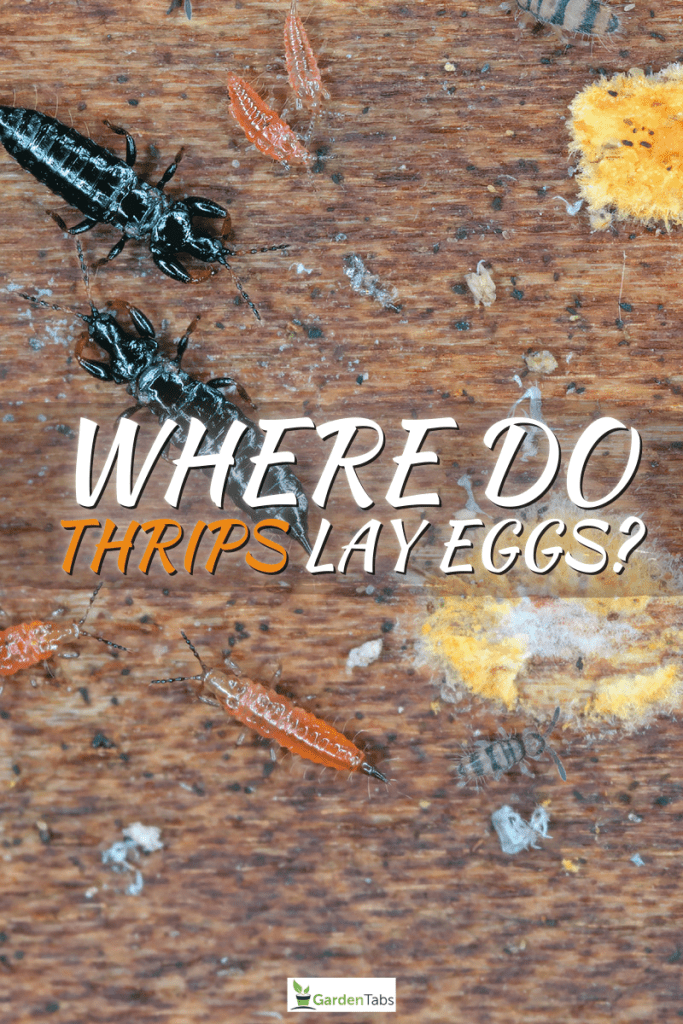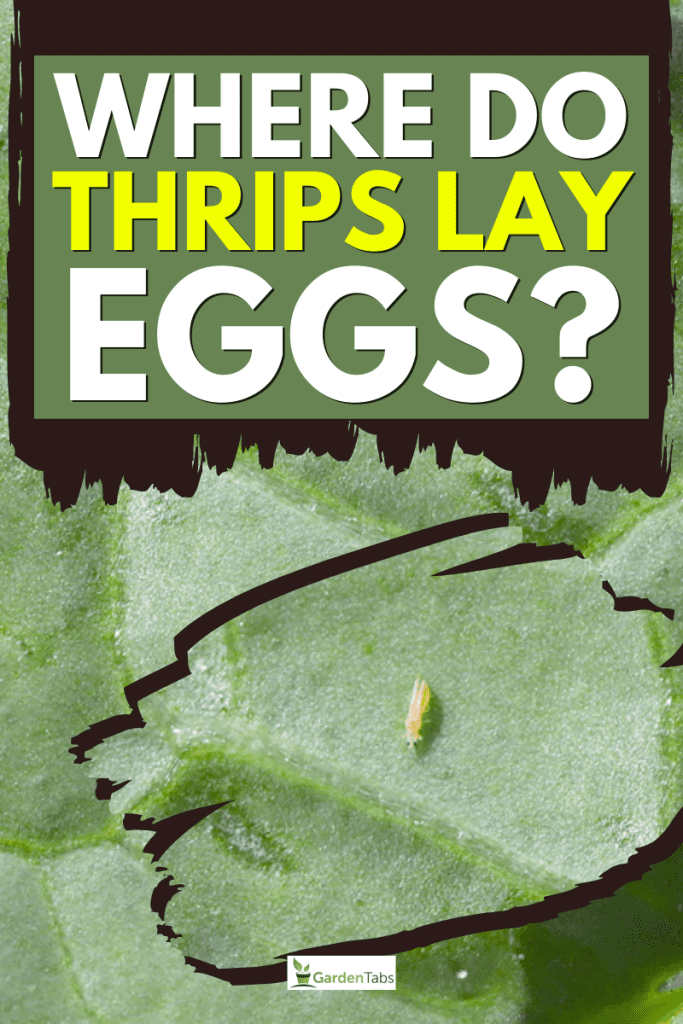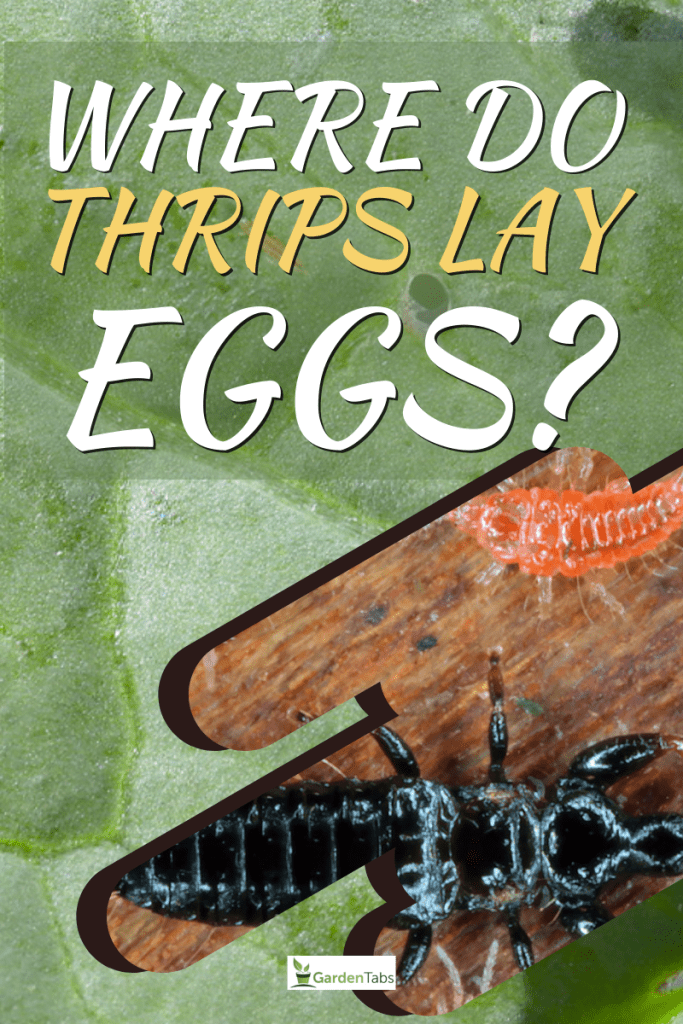Realizing your yard has an insect problem can be incredibly frustrating. For example, have you noticed damage on your plants and thought it might be thrips? Are the leaves on your plants discoloring, and you can't figure out why? Where do thrips typically lay their eggs?
Well, we've done plenty of research and have the answers below!
Thrips will almost always lay their eggs in the soft tissue of your plants. Although this isn't necessarily damaging, they can make entire leaves on a plant their home, causing it to discolor and die over a long period.
That's because thrips need to eat, which means feasting on your vegetation's foliage. Thrips will puncture the outer layer of host tissue and suck out the cell contents, causing leaves to lose their color and health.
As we start this article, we will cover all things thrips and discuss where they lay eggs. Whether you suspect one of your plants has a thrip infestation, notice leafs turning dull or dying, or need other help, we've got you covered. With that said, let's dive right into this topic!

How Can You Tell A Plant Has Thrips?
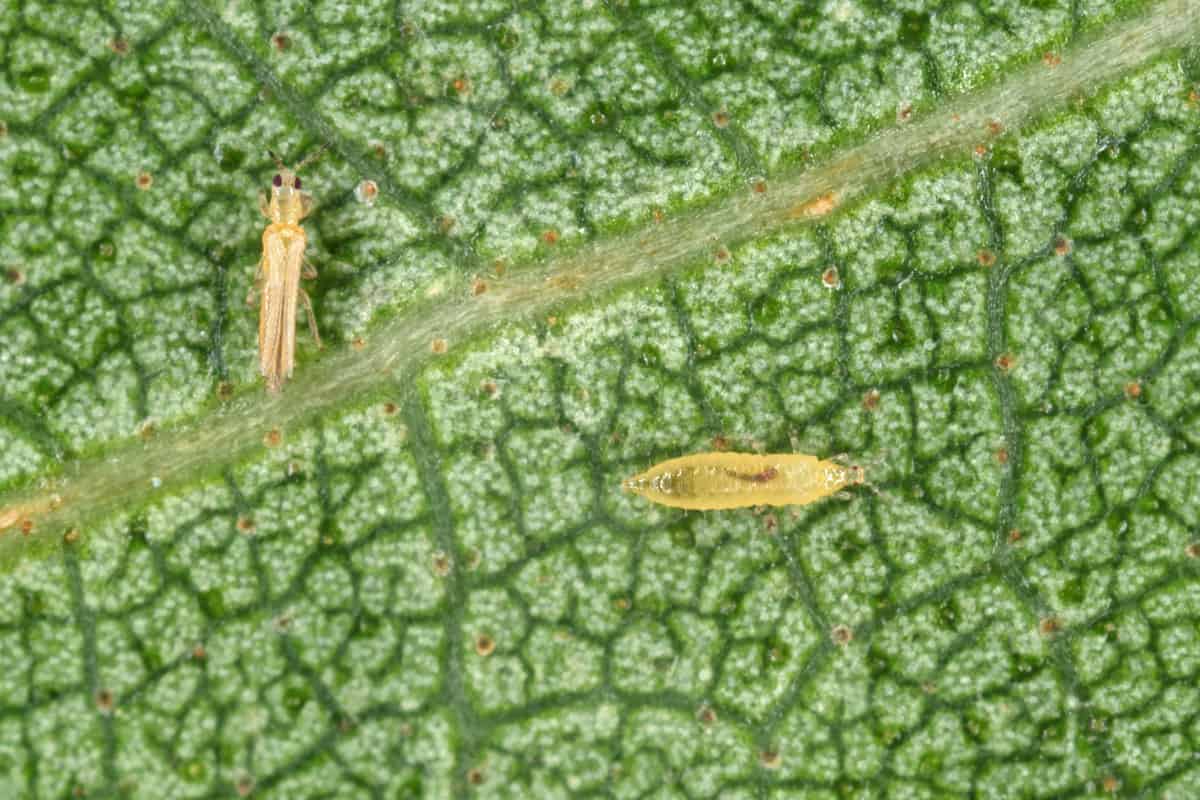
If a plant in your landscape has thrips, finding them can be difficult. Since thrips are so tiny, the naked eye can't often see them on a leaf.
However, there are signs of a thrip infestation to keep your eyes peeled for, including leaf-silvering, browning, wilting, and an animated line moving around the leaf's veins when you shake it.
Thrips tend to travel in groups, so if you move a leaf and notice its veins also moving unusually, you've got thrips.
One of the main issues with having thrips is they burrow inside the leaves of a plant. For example, thrips will find a spot in your yard they like and puncture one of the leaves on your plant.
From there, the thrips will lay eggs inside and eat the cell contents of your leaf, moving to the next when they're done. So, although they're tiny, thrips in large numbers can devastate a garden.
On top of that, reddish-brown spotting on leaves is a clear signal of thrips, so if you notice anything odd, make sure and take a closer look.
Where Do Thrips Lay Their Eggs?
Thrips usually lay their eggs inside the leaves of a plant. As we mentioned, thrips burrow inside the leaf and eat and reproduce. Therefore, your plant may only have a few affected areas until the current leaf(s) your thrips are in become less nutrient.
Think of this as the thrips sucking out the life from the leaf, moving to the next when they're done. One thing to note is that thrips laying eggs inside a plant's leaves isn't necessarily damaging.
When they begin to eat everything inside is when the damage occurs. Therefore, your plants would be fine if your thrips were only laying eggs and moving on.
Unfortunately, that's not how this species works, so with eggs also comes quite a bit of foliage damage.
Female thrips lay between 150-300 eggs, depending on the species, so this can become a significant issue for your plants. The best action is to find and remove the affected leaves from your plant.
Then, you can block thrips from migrating from leaf to leaf, saving your vegetation. Since these pests are so small, you may even want to go around your plant with a magnifying glass and inspect the leaves/veins.
Do Thrips Lay Eggs In The Soil?
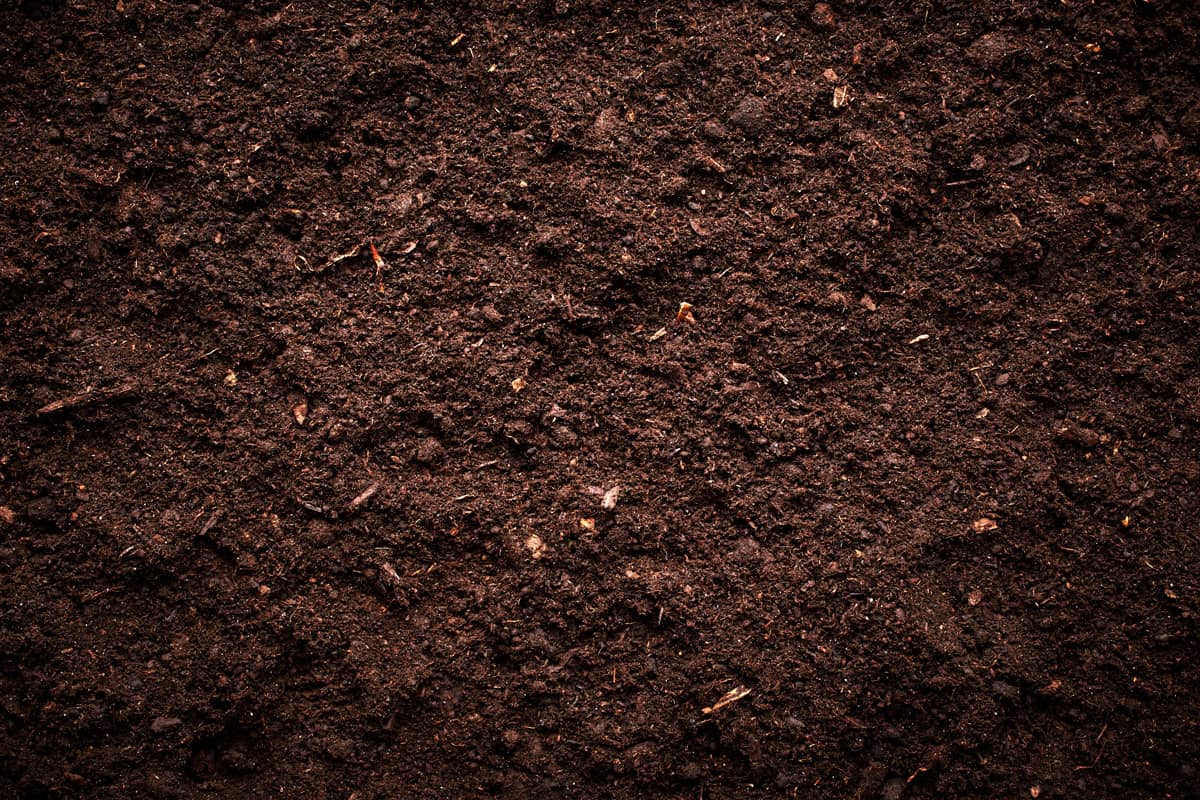
Although thrips tend to stay inside the leaves of a plant, it's possible to see them in the soil. Generally, thrips will lay eggs in leaf debris on the ground.
Thrips may also lay eggs in surrounding soil or underneath benches in greenhouses. As mentioned, thrips are very small, meaning they need as much protection as possible.
Therefore, it is most common for them to burrow inside plant vegetation. The ground, also dense and filled with spots to nest, doesn't provide thrips nearly enough safety or nutrients as the inside of a leaf does.
Smaller pests tend to travel in large groups, so thrips depend on one another to find new safe spaces to eat, sleep, and reproduce.
Again, it's not the eggs that damage your plant's leaves—it's the constant eating by the hatched thrips.
How Long Does It Take For Thrips Eggs To Hatch?
You can usually expect the eggs from a female thrip to hatch within a few days after being laid. Generally, thrips will lay up to 300 eggs inside a leaf, which hatch days to weeks afterward.
According to experts, a thrip takes roughly 40 days to become an adult, meaning most of its early time is spent as wingless larvae or nymphs.
Therefore, in the beginning weeks, the baby thrips won't damage plants but instead develop inside the leaves. However, once these thrips mature into self-sustaining creatures, they'll join the others and start eating.
It's also worth noting that thrip eggs may take longer to hatch depending on the weather. For example, if it is a cooler period (early spring and fall), thrip eggs can take up to three weeks to hatch.
So, if it's chilly outside and you are trying to get rid of thrips, that may be the best time to remove leaves and spray insect killer. Regardless, 300 eggs hatching all at once means an army of hungry pests, so time is ticking.
What Do Thrips Look Like On Plants? Can You See Them?
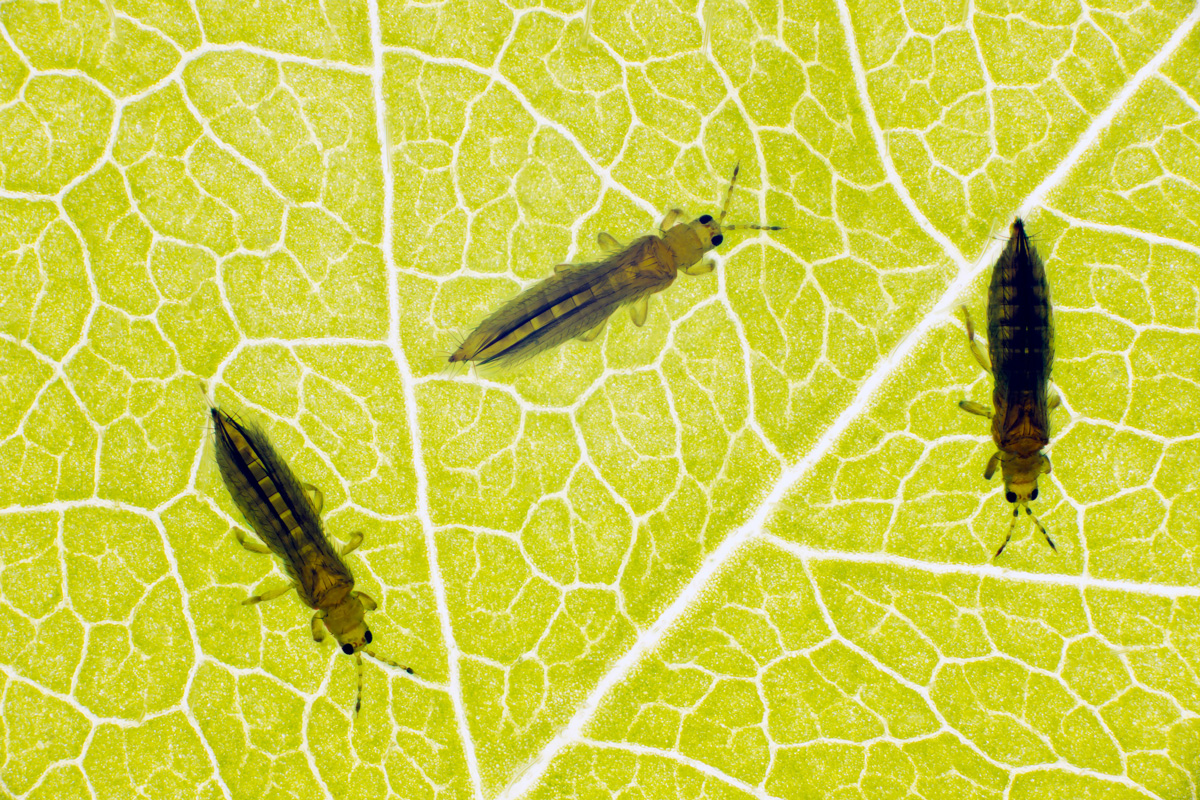
Thrips will often look like tiny black specks on the leaves of a plant. Because they're so small, identifying thrips on your vegetation might require a microscope.
Because of this, many gardeners aren't aware they have a thrip problem. Instead, most people will realize thrips are eating their plants after the damage has become severe.
As we noted, thrips suck out the cells inside your plant's foliage, moving from leaf to leaf until the whole plant is dead or dying. Of course, this takes a long time to happen, so you can usually stop it.
According to Old Farmer's Almanac, thrips up close resemble tiny lobsters, so they're certainly interesting to look at. We recommend shaking a leaf with them over a white piece of paper to see them best.
Next, grab a magnifying glass, and you can watch them on your sheet. Thrips are odd creatures, often remaining undetected for their entire lives.
Especially in the wild, thrips are difficult to find and kill, often allowing them to make a plant their forever home. However, since they lay so many eggs at once, they can devastate local ecosystems and wreak havoc on gardens.
So, even though these micro lobster lookalikes don't catch our eye, that doesn't mean we should ignore them on our plants.
Do Thrips Kill Plants?
Although the case would need to be severe, thrips can cause plant health and growth issues. Most times, a thrip infestation will cause damage to your plant's leaves.
If this becomes bad enough, it is possible to see plant sections die entirely. However, this would require thousands of thrips eating, reproducing, and migrating within your plant.
One of the main issues with thrips on plants is stunted growth. Experts say thrips damage plants by sucking their juices and scraping at fruits, flowers, and leaves/foliage.
That can become a problem for your plant's overall health, leading to stunted growth. However, your plant shouldn't die with a minor thrip infestation, mainly if you handle it.
Since thrips are so tiny, they can't devastate a plant like a larger insect can. You can usually get ahead of their egg-laying and hatching cycle and eradicate them in a few days with certain products, so there's no need to panic.
What Is The Best Way To Get Rid Of Thrips On Plants?
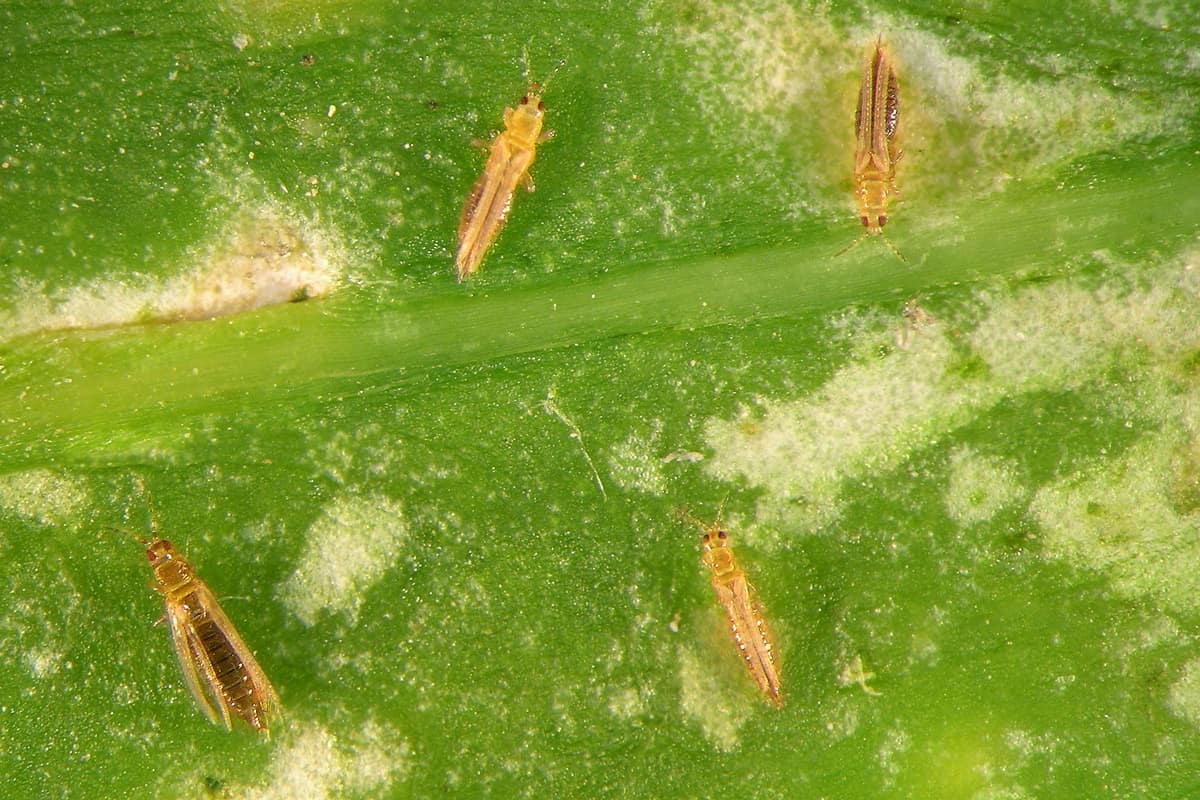
One of the best ways to handle thrips on your plants is by spraying them with pyrethrin. This product is a natural pesticide made from chrysanthemums that will get rid of thrips.
Unlike aggressive herbicides or pesticides, pyrethrin should get rid of thrip populations while protecting the host plant from harm. In contrast, if you use a more aggressive chemical to remove thrips, you can also kill the leaves you spray.
We recommend spraying pyrethrin on infested plants twice, allowing four days between applications for the best results. This will take some time, so don't be discouraged if the thrips don't die immediately.
On top of that, you might also want to prune off any affected leaves from your plant. If you notice any signs of thrips (reddish brown spotting is an easy indicator), that's when pruning is a good idea.
Even removing the leaves nearby a thrip infestation can be helpful. Once you have the leaves off your plant, you want to throw them into the garbage.
Remember, thrips will stay alive in leaf debris on the ground, eventually returning to a live host plant. Therefore, you want to remove and discard the leaves to eliminate the infestation.
To Wrap It All Up
Whether your plants have thrips or you suspect an infestation is coming, it's always good to have a game plan. We found that thrips lay eggs inside the leaves of a plant.
Although that doesn't necessarily harm them, thrips feed on the leaf's cells until no nutrients are left. This can cause discoloration and the veins of your plant's foliage to be noticeable.
Furthermore, thrips can lay up to 300 eggs per cycle, meaning you want to remove any leaves where spotting, silvering, or prominent veins are showing.
It's much easier to prevent thrips than it is to eradicate them. Good luck!
Have you made it to the end? Check out these helpful garden articles below:
Springtail Vs. Thrip: What’s The Difference & How To Treat?

